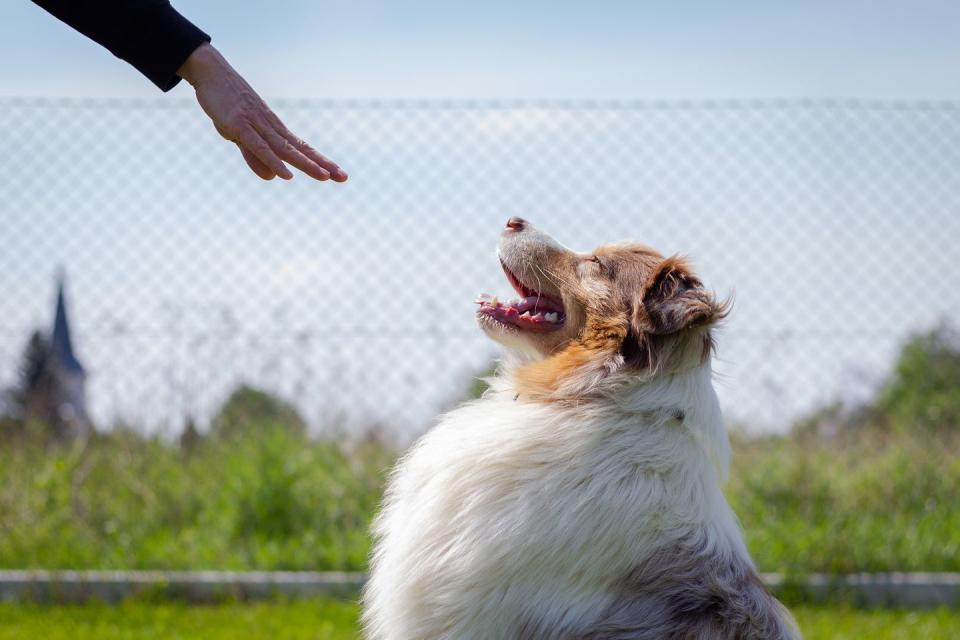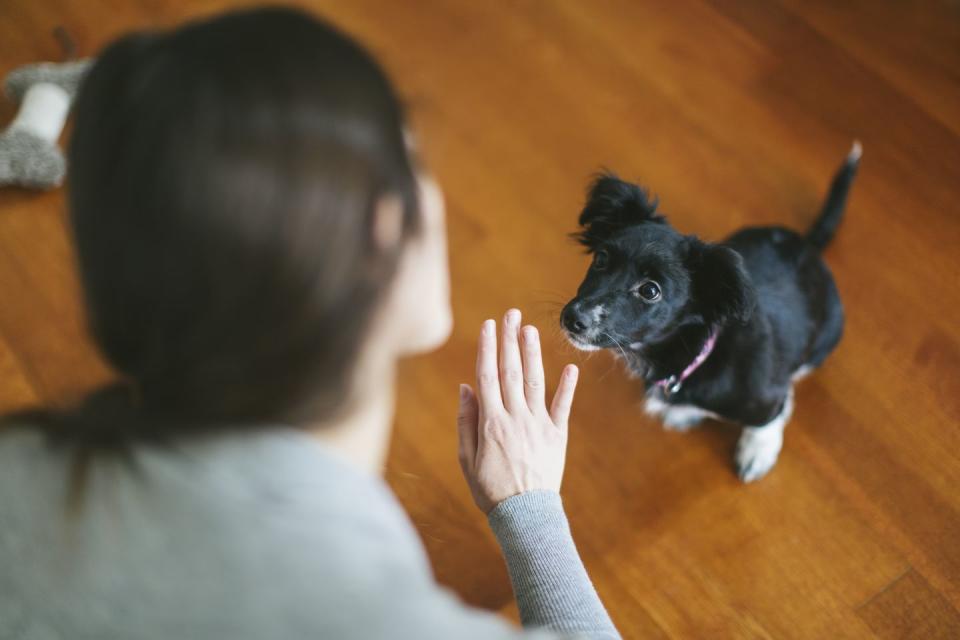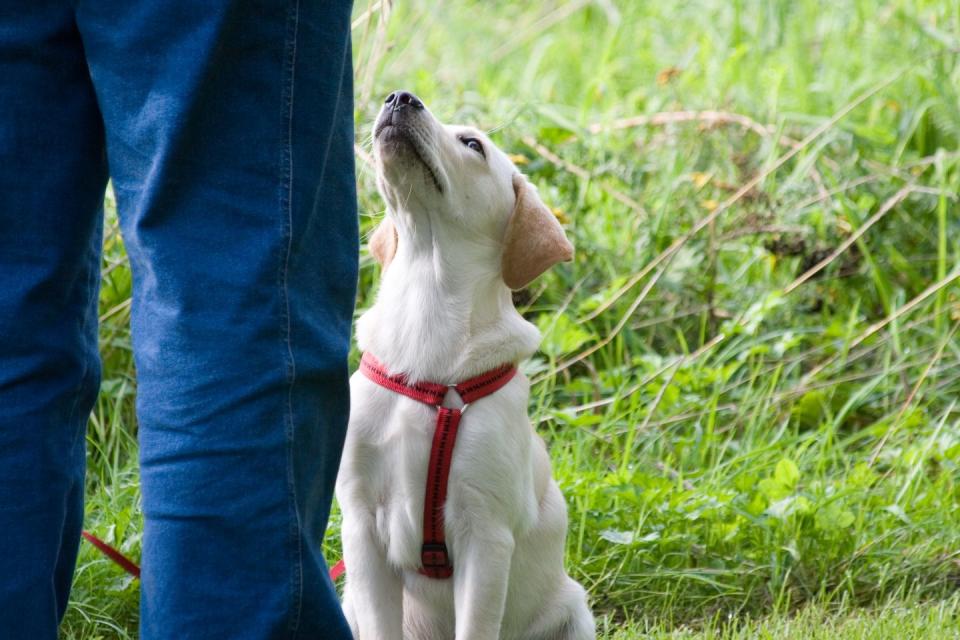10 Things Every Dog Owner Should Know Before Training, Straight from a Pro

"Hearst Magazines and Yahoo may earn commission or revenue on some items through these links."
Training your dog is necessary. Whether you've got a brand new puppy or an older dog that needs to learn a few new tricks, the idea of taking your dog from knowing nothing to being a housebroken, trick-doing all-star can be equal parts exciting and overwhelming — especially if you're new to dog training yourself. To help make the process go a bit smoother, we asked professional dog trainer and Director of Communications for The Westminster Kennel Club, Gail Miller Bisher how to train a dog if you have no idea where to start.
Miller Bisher began training dogs at the age of 10, and has competed in everything from dog sports to obedience competitions — and she’s picked up plenty of helpful tips along the way. For anyone looking to potty train their puppy or swiftly teach their pup new skills, these dog training tips will guarantee an attentive, well-behaved dog in no time.
Have regular bathroom breaks
When you're trying to potty train your pup, Miller Bisher says its important to take them outside to go to the bathroom at regular intervals so that they can learn a routine. And when they do go, make sure to go over the top with your praising.

Have a closed off puppy area
When your potty training puppy is indoors, make sure to keep them in an enclosed space, like a puppy pen, and only let them out to explore the rest of the home at set intervals, Miller Bisher says. This can typically be done after you've taken them outside to use the bathroom to lessen the chance of accidents around the house.

Puppy proof your floors
"Like small children, pups will have accidents and make messes," Miller Bisher says. So to help you out while training, and make the clean up much easier, she recommends considering products like LifeProof with PetProof Technology Carpet that are stain and odor resistant. Being able to easily clean up any messes and get rid of the smell will also discourage your pup from having another accident in the same area.

Only use treats for training
It's tempting, but Miller Bisher says it's not a great idea to just give your dog treats because you think he or she is being cute. "Treats are only used as a reward when training," she says. "If they get treats when working/learning, then that becomes a fun activity they will always want to join."

Be consistent with commands
"Any dog trainer will tell you that training the dog is easy, its training the people that is difficult," Miller Bisher said. "All the people in the home need to use the same commands for the dog to learn a word’s proper meaning. If you don’t want the dog to jump on people, decide if you are going to use the word 'down or 'off' before the training begins, then all family members must use the same words."

Make it a game
Rather than always relying on treats to keep your dogs attention, Miller Bisher says you should make each training session fun for the dog so that they want to participate. "Whether I’m training for the show ring or obedience competitions I make training a game," Miller Bisher says. "I find that simply using my voice and body movements keeps their attention, as I tend to break into play at any given moment."

Learn your dog's behavior
One of the most important things you need to do is to observe, learn, and then adjust your training style based on your dog's behavior. "A big part of the fun when training dogs is learning what makes that dog tick," Miller Bisher said. "Observing the dog’s behavior and knowing its breed temperament will help you determine the best way to work with the dog."

Only teach one trick at a time
When you're teaching your pup some new tricks, don't go trying to get it to learn "sit," "down," and "high five" all in one go. Miller Bisher says to make sure you dog masters one exercise at a time before moving onto another.

Keep training sessions short
Some dogs, and puppies in particular, may not have the longest attention spans, so it's best to keep training sessions short but frequent, according to Miller Bisher. "[You] can even do two short sessions in a day," she says. "Puppies are still learning about everything in the world through their nose, eyes, ears and mouth. Whereas an adult dog will be able to focus more."

End each training session on a high note
When you're teaching your dog a new trick or exercise, you want to make sure you end each of your training sessions on a high note. When you're wrapping up the session, do an exercise that your dog knows really well so that they can end the sessions feeling confident, Miller Bisher says.

You Might Also Like